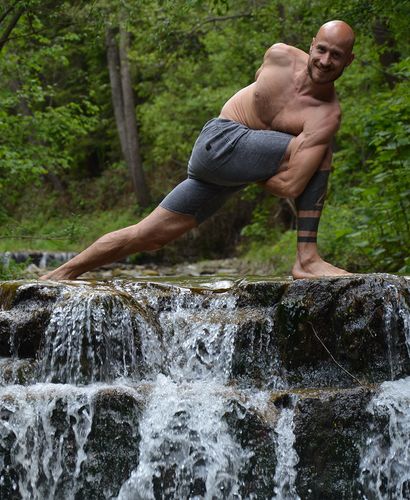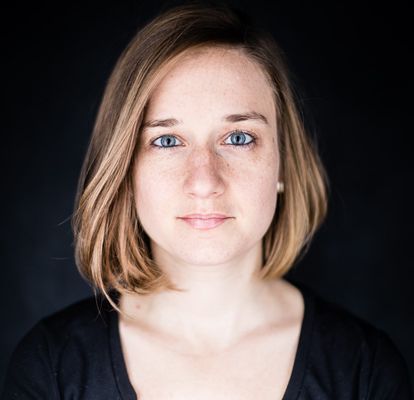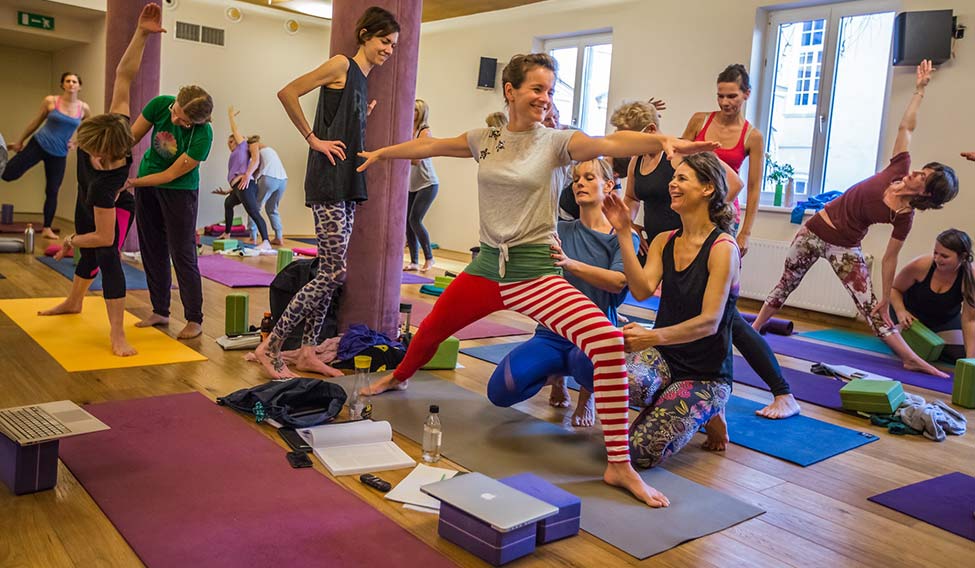In ancient Greece, the birthplace of western philosophy, philosophy was understood above all as a way of living. To be a philosopher today, at least in the west, is to be someone who reads, writes and talks about texts. It is an entirely theoretical activity. But in ancient Greece, you could be a philosopher without ever writing anything. What counted was how you lived.
I’ve been intrigued by this idea for a long time. I’m a professor of philosophy at an Austrian university, and over the last few months, I’ve been teaching a course called Philosophy as a Way of Life. The basic question of the course is: what would it be to live a philosophical life today? Does the ideal of ancient Greece make any sense in the completely different world that we live in?
The course is highly experimental. We began by reading about the ancient Greek philosophers, about the idea of philosophy as a way of life. But soon we moved on to something much more practical: what can we do in our lives, in our day-to-day existence, to come closer to the truth? To find happiness? To find peace?
To that end, many of the participants, me included, have conducted various experiments (‘experiments’ is inspired by the title of Gandhi’s autobiography, The Story of my Experiments with Truth). For example, I gave up my iPhone for three weeks (there’s a whole article in that experience!). Another person deliberately took time every day—half an hour, she said—to walk in the woods without her phone, without her watch, just herself and nature and her thoughts. Many people attempted meditation.
Meditation was the single most common experiment that people tried. In the sessions where we talk about what we’re trying, meditation is what everyone is most interested in. Much to my surprise, a fair number of participants—these are all young people from the west, remember—had already had experience of meditation, had tried to learn about it, had taken the time and effort to study at least some of the religious and spiritual background that is often associated with meditation.
What I found especially fascinating is that for all these western youngsters, that background was—without exception—Indian spirituality (if we include, as we should, Buddhism). We can take this for granted because it’s so common now for westerners to be interested in Indian spirituality.
 Twists and turns: David Suppan, a yoga practitioner in Austria, shows off his skills | David Suppan
Twists and turns: David Suppan, a yoga practitioner in Austria, shows off his skills | David Suppan
But when you think about it, it’s highly odd. The young people in my class all have a Christian background. In many cases, they come from religious families. And Christianity is a highly well-developed tradition that contains religious and spiritual resources of great depth and power. Specifically, Christianity contains extensive resources for people who feel like they’re missing something important, who are searching for something (it could be peace, or their true self, or God). For crying out loud, it has extensive resources for people who are drawn to meditation!
To see the weirdness, imagine it the other way around. Imagine a young Indian, maybe someone who has studied hard, who has now started a good corporate job. He has done it for a couple of years, maybe. And slowly, he has begun to wonder: Why do I feel so stressed? Why am I not happy? So agitated? Is this all there is?
He begins, in other words, to start questioning the values he had earlier just believed. He begins to ask, is a good job really what life is about or is there something deeper, ultimately more important? He begins to be unhappy, perhaps even a little lost.
In such a situation, some people turn to drink, some to sex, some to drugs, some to work because work can also be a narcotic. These are natural reactions. But some people, in what is also a very natural reaction, turn to thoughts of God, to yearnings for some kind of eternal peace and happiness.
If our young Indian is that latter kind of person, do you think he would turn to some entirely foreign religion? Of course not! He would turn to the religion he had been brought up in. So if he was Christian he would turn to Christianity; if he was Hindu, it would be Hinduism he would turn to.
And that’s what I find fascinating. Why do people in the west who feel spiritual longings turn to Indian spirituality? What is it about Indian spirituality that is so alluring? What does it offer, or what do they think it offers, that they feel like they can’t find in their own religion?
The question is too complex for simple answers. And as you will see, I have no definitive answers. But as I went around Graz, the Austrian city where I have lived for the last nine years, meeting people interested in Indian spirituality, involved in things like meditation and yoga, I began, I think, to understand a little bit more.
Yoga is a good place to start, because I think by understanding why it’s so popular in the west we get some clues as to why Indian spirituality more widely has become so popular. Furthermore, it’s the most obvious—indeed, overwhelming—sign and symbol of the spread of Indian spirituality in the west. Graz is overrun with yoga studios, with yoga teachers and students. Maybe it’s just the circles I move in, but it feels like every second person I meet either does or teaches yoga. As David Suppan, one of those people, says, “Yoga is very big in Graz by now. I think it’s at the peak, it can’t really develop itself much more. There’re lots of teachers, ever more studios, big and small. And Graz isn’t so big.”
Maria Sintschnig is a lean, friendly, fit-looking woman in her early 50s, and one of the people mainly responsible for that development in Graz. In 2000, she founded City Yoga, which has since developed into one of the biggest yoga studios in Graz (http://www.cityyoga.at/). I met her just before a class she was teaching on a Sunday evening, and I began by asking her how and why she came to yoga in the first place.
“It was in 1990,” she says. “I came to yoga in California. I was really young and I was searching… for the meaning of my life, yes, but also after something that helped me to feel good as a woman. I had,” she continues, “all the pains I could have as a woman. So I went to California because I heard there was a lot of work done with the body there.”
She went to an acupressure institute in Los Angeles. One of the courses offered there was something called Accu-Yoga, a mixture of acupressure and yoga. “I visited that course,” she says, “and it was unbelievably good for me, it felt unbelievably good. I was like, oh, you can feel your body pretty easily actually, it’s not that difficult.”
This was a common theme when I asked people in Graz why they decided to try yoga. In Bangalore, at one of the places I myself tried yoga, the teacher told me often: Yoga is not fitness. If your heart starts beating quickly, stop, let it come back to its normal rate, and only then start again. But in Graz, as Maria says, “people come (to yoga) because they want to get fit, or because they have pain, or they want to look good or be thin.”
Anna Wagner, for example, a 29-year-old theatre teacher, first tried yoga as a 19-year-old because “I always had back pain, and so I tried yoga, and it really helped me. My back pain was less, I just felt good.” David Suppan, 29, and training now to be a yoga teacher, also “came to yoga for physical reasons. Yoga was for me clearly a body thing. People say, ‘I should stretch, I’m not flexible enough, so I’ll do yoga.’ That was my starting point, too. I wanted to stretch, to become more flexible.”
But with all of them, and most of the others I spoke to, over time yoga ended up meaning much more than simply a way of keeping fit or looking good. I’ve noticed a common development among the Austrian people I know who do yoga. They go a couple of times, maybe because a friend says it’s good, maybe just because they want to try something new, maybe because they have pains of some sort. They’re reluctant, even sceptical, because in the west yoga is associated with a certain kind of spirituality, a certain kind of person. But, somehow, over time, they find something in yoga that keeps them coming back for more, something that fulfils a need that sometimes they didn’t even realise they had till it was fulfilled.
 Anna Wagner
Anna Wagner
I asked Anna why she continued to do yoga. “I feel permanently agitated,” she said. “And so I search. How can I find peace? How can I feel better? With my body, my mind, with everything?
“With young people, the people I know, we’re permanently overwhelmed. So for me, I’m a theatre teacher, I have multiple jobs. I’ve worked really hard so that I can live from this work, and it’s great, but it’s also really stressful and tiring. And then even in my free time I’m bombarded from all sides. My smartphone, for example. I hate my smartphone. I don’t want to use it. But even when I’m not working, and I’ve decided to do nothing…, I sit in front of my smartphone… Or, for example, my boyfriend watches TV and I don’t watch with him, I do things on my phone.
“It irritates me. Maybe I’m just weak, maybe I just find the phone so cool. But whatever it is, I realise that I can longer find peace and silence in my mind.”
I think that’s one big reason for the spread of yoga, and for the spread of Indian spirituality in the west. It offers people the possibility of peace, a place of silence. It is a kind of promise, that maybe you can quiet the constant chatter in your head, that you can overcome the turbulent emotions that roil through you, that you can find an island of peace and stability in a very chaotic world.
Maria, for instance, reports of her experience as a yoga teacher. “At the end, on Sunday evenings, I do a small meditation. We have mums who come from home, the kids have been screaming, or many come from the hospital, we have lots of doctors who come after their shift, and they love this. This finding peace, being silent, this quiet in your mind and spirit, everyone loves this.”
So people yearn for peace. But why try to find it by turning to Indian spirituality? Why not Christianity?
Part of it is just that Indian spirituality is trendy and fashionable. Daniel Polz, one of the students in my class, did Vipassana meditation at Chengannur in Kerala, and has an ongoing practical interest in Indian philosophy and religion. Interestingly, his parents are both very religious Christians, who did a lot of Christianity-based meditation in Austria. So I asked him: Why did you pick Vipassana and India, instead of turning to something your parents already knew a lot about? He said, “I think it’s kind of a trend. At Vipassana courses, there are a lot of young people. If I go to meditate somewhere in Austria in a monastery I would be the youngest by far. And I didn’t feel comfortable with that.”
But there’s a more interesting reason. To generalise, the west is a highly individualistic society. It’s one that places a huge importance on figuring out for yourself what your values are, what you want to do. (Young Indians are beginning, I think, to go through this process themselves; the process of finding self-definitions and self-understandings that aren’t dictated to them by family, society, culture. It will be interesting to see how that develops.)
As David Suppan sees it, “My generation has grown up with 360-degree possibilities. This is beautiful, because you can do anything. But also … you don’t know what you want. What excites you. Why do you live?” And that’s what Indian spirituality offers him, he tells me. ‘A set of tools,’ to use his words, that help him “to find your place. Your own place. For yourself. Not to make yourself responsible for others, not to try to find a relationship, not to find the one true love. But for yourself, as yourself. What work gives you joy? What kind of life gives you joy? What excites you?”
I think Indian spirituality offers David, and others, this ‘set of tools’ precisely because it’s foreign. To turn to Christianity would be to turn to a set of values and beliefs that are already in the culture, that are the values of parents, of society at large. But what people are searching for is something that is all their own. And the very foreignness of Indian spirituality makes it something that you can make fully personal. You can interpret it as you like, you can pick and choose, you can live it as you please. Indian spirituality offers a kind of freedom and independence to many western people that Christianity simply cannot.
And then, sometimes, something interesting happens.
David says: “I can’t get with classic European religion, with the church, for instance. But still, the deeper I go into Indian spirituality and Indian culture, and how it’s lived, the more I see parallels with the Christian religion, with the Catholic religion. At the end you get the idea that every religion had the same basis, the same start, just they have different stories, different developments.
“And so I’ve developed a tolerant, more accepting relationship to my birth religion (Catholicism) through my interest and experience in a religion that is more foreign to me. Jesus was a great guru, you know?”
Does David truly follow an accurate version of the spirituality behind, say, yoga? I don’t know. But does it matter if it’s accurate?
I don’t think so, and neither does he.
“Many roads, one destination,” he says. “That makes more and more sense to me.”






